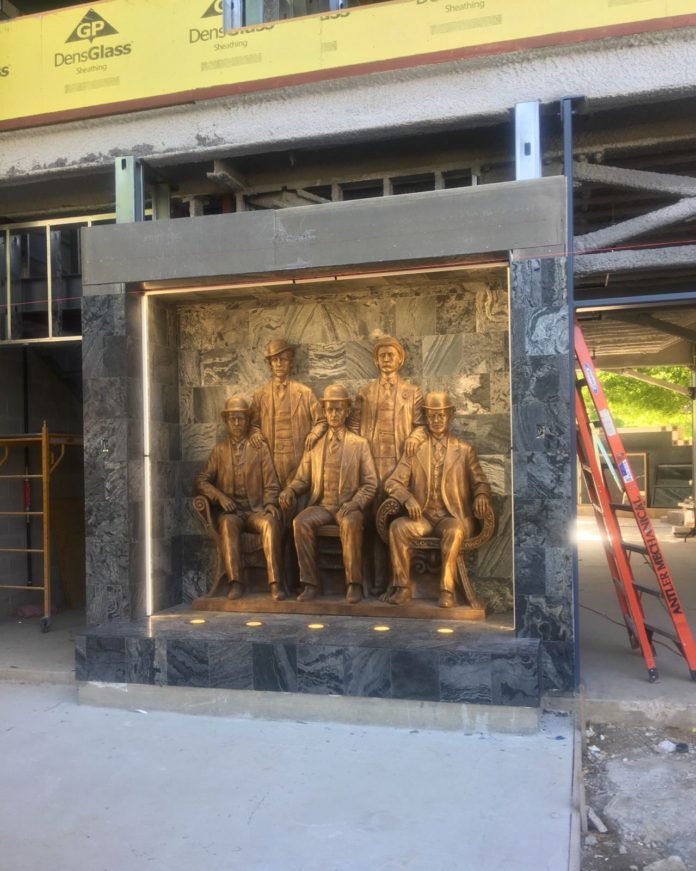If you listen to the Ticket radio station, you may recall a bit by former BAD Radio producer Tom Gribble when he would be “1920s Reporter Guy” and adopt the fast-talking, slang phrase sputtering of a reporter from the Jazz Age.
“CHAMP! CHAMP! Tell us what was going thru your noggin when you gave the Mavs the ol’ 23 Skidoo during the dog days of summer!” he yelled at one puzzled athlete.
It was a great bit, but why did Americans in the 1920s pretty much go crazy? Was it jazz, bad hooch, flappers or just being glad to have survived World War I? Who knows? But it was great for our language. “Let’s ankle,” meaning to leave. Or “She’s the berries,” meaning something really good. “Cheaters” for glasses. “Bimbo,” which then meant a macho dude. Maybe it still does.
But “23 Skidoo”? What does that mean? And what does it mean for Fort Worth?
Be patient as I digress.
George Cravens, board-certified neurosurgeon and owner of the historic, cool-as-heck Flatiron Building, dedicated his latest public art installation, “The Wild Bunch,” outside the building on Friday, Dec. 8. It’s a bronze sculpture featuring the Butch Cassidy and Sundance Kid gang known as The Wild Bunch.
The Wild Bunch, one of the infamous outlaw gangs of the Old West, apparently liked to hang out in a Fort Worth that had a lot to offer in terms of gambling, booze and wild, wild women (Hey, where’s all that stuff in the city’s new Economic Development Plan?). Led by Cassidy, the cash stolen by the Wild Bunch amounted to what would be about $4 million in today’s dollars. After pulling off robberies, the Wild Bunch came to Fort Worth’s infamous downtown area known as Hell’s Half Acre to lay low and party down. They posed for the famous photograph in 1900 that ultimately led to their identification and capture and/or death. Now, that famous photograph has been turned into a bronze sculpture that resides near the iconic Flatiron Building.
The Flatiron Building was designed by the Fort Worth firm of Sanguinet & Staats and opened in 1907. Fort Worth’s Flatiron Building was modeled after the Flatiron Building in New York that opened in 1902. That building was designed by Daniel Burnham of Chicago in the Beaux-Arts style.
Fort Worth’s Flatiron Building apparently caused a stir because nearby merchants thought such a tall structure – it was originally designed as 10 stories, but ended up being seven – would cast a shadow over other businesses. They were apparently mollified by the thought of the publicity the building would bring, since seven-story buildings were hardly the norm in 1907.
Why did Fort Worth want a Flatiron Building similar to New York’s? William Jenkins Worth, the man for whom our fair city was named, is buried on a small island of land at the intersection of Broadway and Fifth Avenue, basically at the base of Manhattan’s Flatiron Building. That apparently inspired the design of the Fort Worth building, though I couldn’t find a good citation for that. .
The New York building caused a bit of a stir, too.
At 20 stories, it was one of the tallest buildings in the city and locals placed bets on how far the debris would fly when the wind knocked it down. While the wind didn’t knock it down, it did have an impact on people walking near the building.
The building is at 23rd Street, with Broadway on one side, Fifth Avenue on the other and Madison Square and a park in front of the building. With the strange shape of the building, wind currents swirled around it, causing downdrafts from above and updrafts from below. Men, in those pre-Harvey Weinstein days, would apparently hang out and watch women’s dresses get blown up by the wind. The phrase “23 Skidoo” apparently was what policemen would shout at the men who tried to hang out in the area.
So if you see someone unsavory hanging out near Fort Worth’s Flatiron Building, tell ‘em to “23 Skidoo,” in your best 1920s Reporter Guy voice. The phrase and the building belong together.
Robert Francis is editor of the Fort Worth Business Press.






